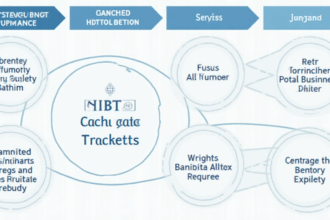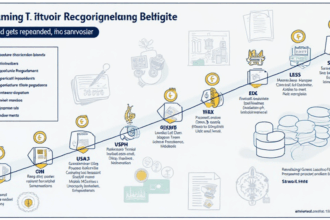Enhancing Bitcoin Mining Energy Efficiency: Key Developments Post 2023
With the rapid advancements in technology and an ever-increasing demand for energy in the crypto world, Bitcoin mining has come under scrutiny for its environmental impact. In 2023, Bitcoin mining consumed approximately 0.6% of the global electricity supply. However, the evolving landscape presents opportunities for energy efficiency improvements that not only support sustainability but also enhance profitability for miners. This article delves into recent advancements in Bitcoin mining energy efficiency and their implications for the future of cryptocurrency.
Understanding Bitcoin Mining Energy Consumption
Bitcoin mining is the process wherein miners use computational power to solve complex mathematical problems that validate transactions and secure the network. This endeavor requires significant energy, leading to concerns about its environmental sustainability. According to the Cambridge Centre for Alternative Finance, the Bitcoin network’s energy consumption reached about 98 terawatt-hours (TWh) annually, comparable to that of the Netherlands.
Recent studies suggest that enhancing energy efficiency in Bitcoin mining is not merely a carbon-saving endeavor but may significantly bolster profitability. Here’s the catch: miners who adapt to more energy-efficient technologies can reduce costs and maximize returns.

Innovations Driving Energy Efficiency
Improvements in energy efficiency can take several forms: hardware advancements, cooling technologies, and renewable energy sourcing. Let’s break down each.
- Next-Generation Mining Hardware: Devices like ASICs have evolved, with models such as the Bitmain Antminer S19 XP boasting up to 140 TH/s and energy consumption as low as 21.5 J/TH. These powerful machines offer significant ROI for miners opting to upgrade their equipment.
- Renewable Energy Integration: It’s estimated that around 60% of Bitcoin mining operations utilize renewable energy sources. Hydropower and solar energy are particularly popular, with regions like Xinjiang in China and the Pacific Northwest in the U.S. capitalizing on abundant natural resources.
- Advanced Cooling Solutions: Innovative cooling systems, such as immersion cooling, can increase the lifespan of hardware and reduce energy costs. These solutions are gaining traction as miners seek to optimize operational efficiency in various climates.
The Economic Impact of Energy Efficiency Improvements
The surge in energy efficiency not only plays a crucial role in environmental sustainability but also affects the economics of Bitcoin mining. A 2025 industry report revealed that miners who invested in energy-efficient technology reported a 30% decrease in operational costs.
For example, a mining operation in Vietnam that historically utilized traditional methods switched to a mix of solar power and state-of-the-art mining rigs. As a result, they experienced a 50% increase in profitability. Furthermore, the adoption of energy-efficient practices can stabilize miners against fluctuating energy prices, which are notoriously volatile.
The Role of Regulation and Compliance
As the world grapples with the implications of high energy usage in mining, regulations surrounding energy consumption are likely to become stricter. In recent discussions, regulatory bodies have suggested “tiered energy pricing” for miners based on their energy efficiency contributions. This could reinforce the shift towards adopting sustainable practices.
In Vietnam, where the cryptocurrency market is witnessing rapid growth, the government has introduced incentives for businesses that comply with sustainability standards (“tiêu chuẩn an ninh blockchain”). These policies encourage miners to invest in greener technologies, stimulating both the economy and environmental stewardship.
The Future Outlook: Towards Greater Sustainability
The Bitcoin ecosystem is evolving, and mining is no exception. As energy efficiency improvements proliferate, they promise not only a reduction in carbon footprints but also create a more sustainable future for the industry at large. According to forecast analytics by Chainalysis, up to 80% of Bitcoin mining could become sustainable by 2027, reshaping the industry’s public perception.
Moreover, financial models that factor in sustainability are becoming increasingly important. Investors are now considering the environmental, social, and governance (ESG) criteria when financing mining operations, which introduces new opportunities for responsible investment.
Real-World Applications and Case Studies
To understand better the impact of energy efficiency in Bitcoin mining, let’s examine notable case studies.
- Hydropower Implementation in Canada: A mining operation situated near hydroelectric plants reported substantial cost savings and a reduced carbon footprint, showing that renewable energy can be a game-changer.
- Vietnam’s Emerging Market: The growth rate of cryptocurrency users in Vietnam is projected to rise by 25% in 2025. Projects utilizing blockchain technologies focused on energy efficiency could capture this expanding market.
Conclusion
As the cryptocurrency landscape evolves, Bitcoin mining’s energy efficiency improvements post-2023 will remain at the forefront of industry dialogues. By embracing new technologies, sustainable practices, and regulatory frameworks, miners can significantly alter their operational strategies while contributing to a greener future.
The improvements in energy efficiency not only address environmental concerns but also enhance profitability and reshape mining operations within the broader cryptocurrency ecosystem. For miners and stakeholders, the path forward must integrate sustainability into their operational ethos.
Stay ahead in the rapidly changing landscape of cryptocurrency by considering the ongoing advancements in energy efficiency and their implications for Bitcoin mining. To stay updated on the latest developments, visit bitcryptodeposit.
Author: Dr. William C. Redford, an expert in blockchain technology with over 15 published papers and has led audits for several leading cryptocurrency projects.







